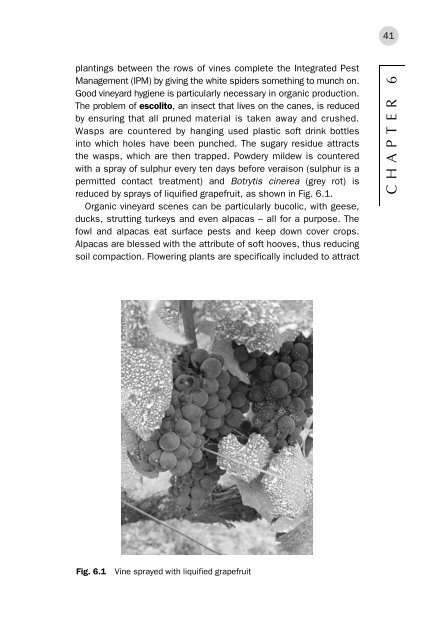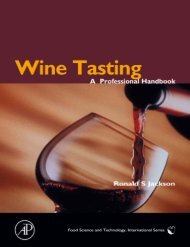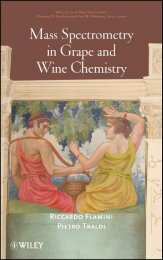Wine Production : Vine to Bottle - Vinum Vine
Wine Production : Vine to Bottle - Vinum Vine
Wine Production : Vine to Bottle - Vinum Vine
You also want an ePaper? Increase the reach of your titles
YUMPU automatically turns print PDFs into web optimized ePapers that Google loves.
41<br />
plantings between the rows of vines complete the Integrated Pest<br />
Management (IPM) by giving the white spiders something <strong>to</strong> munch on.<br />
Good vineyard hygiene is particularly necessary in organic production.<br />
The problem of escoli<strong>to</strong>, an insect that lives on the canes, is reduced<br />
by ensuring that all pruned material is taken away and crushed.<br />
Wasps are countered by hanging used plastic soft drink bottles<br />
in<strong>to</strong> which holes have been punched. The sugary residue attracts<br />
the wasps, which are then trapped. Powdery mildew is countered<br />
with a spray of sulphur every ten days before veraison (sulphur is a<br />
permitted contact treatment) and Botrytis cinerea (grey rot) is<br />
reduced by sprays of liquified grapefruit, as shown in Fig. 6.1.<br />
Organic vineyard scenes can be particularly bucolic, with geese,<br />
ducks, strutting turkeys and even alpacas – all for a purpose. The<br />
fowl and alpacas eat surface pests and keep down cover crops.<br />
Alpacas are blessed with the attribute of soft hooves, thus reducing<br />
soil compaction. Flowering plants are specifically included <strong>to</strong> attract<br />
CHAPTER 6<br />
Fig. 6.1<br />
<strong>Vine</strong> sprayed with liquified grapefruit
















